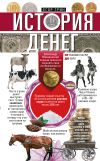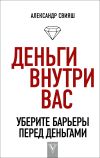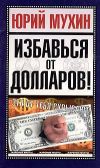Текст книги "Проклятие наличности"

Автор книги: Кеннет Рогофф
Жанр: Экономика, Бизнес-Книги
Возрастные ограничения: +16
сообщить о неприемлемом содержимом
Текущая страница: 25 (всего у книги 26 страниц)
Библиография
• Аджемоглу, Дарон и Джеймс А. Робинсон. 2016. Почему одни страны богатые, а другие бедные. Происхождение власти, процветания и нищеты. Москва: АСТ.
• Ахамед, Лиакват. 2014 Повелители финансов. Банкиры, перевернувшие мир. Москва: Альпина Паблишер.
• Джевонс, Уильям. С. 2005. Деньги и механизм обмена. Челябинск: Социум.
• Дитон, Ангус. 2016. Великий побег: Здоровье, богатство и истоки неравенства. Москва: Издательство Института Гайдара.
• Достоевский, Ф.М. 1972. «Записки из мертвого дома», в: Ф. М. Достоевский. Собрание сочинений в 30 т. Т. 4. Ленинград: Наука.
• Кейнс, Джон Мейнард. 2007. Общая теория занятости, процента и денег: избранное. Москва: Эксмо.
• Международный валютный фонд. 2013. Перспективы развития мировой экономики. Апрель 2013. Вашингтон, округ Колумбия: Международный валютный фонд. https://www.imf.org/ external/russian/pubs/ft/weo/2013/01/pdf/textr.pdf.
• Обстфельд, Морис и Кеннет Рогофф. 2015. Основы международной макроэкономики. Москва: Издательский дом «Дело» РАНХиГС, 2015.
• Поло, Марко. 1956. Книга Марко Поло. Москва: Государственное издательство географической литературы.
• Рейнхарт, Кармен М. и Кеннет Рогофф. 2011. На этот раз все будет иначе: восемь столетий финансового безрассудства. Москва: Карьера Пресс.
• Ротбард, Мюррей. 2005. История денежного обращения и банковского дела в США. Челябинск: Социум.
• Фергюсон, Ниал. 2015. Восхождение денег. Москва: АСТ.
• Франклин, Вениаман. 1956. «Нравственность игры в шахматы», в Вениамин Франклин. Избранные произведения. Москва: Государственное издательство политической литературы.
• Фридман, Милтон и Анна Шварц. 2007. Монетарная история Соединенных Штатов 1867–1960. Киев: Ваклер.
• Хикс, Джон. 2003. Теория экономической истории. Москва: НП «Журнал Вопросы экономики».
• Abrams, Burton A. 2006. «How Richard Nixon Pressured Arthur Burns: Evidence from the Nixon Tapes.» Journal of Economic Perspectives 20 (Fall): 177-88.
• Acemoglu, Daron, and James Robinson. 2013. Why Nations Fail: The Origins of Power, Prosperity and Poverty. New York: Crown Business.
• Adam, Klaus, and Roberto M. Billi. 2007. «Discretionary Monetary Policy and the Zero Lower Bound on Nominal Interest Rates.» Journal of Monetary Economics 54 (3): 728-52.
• Admati, Anat, and Martin Hellwig. 2013. The Bankers’ New Clothes: What’s Wrong with Banking and What to Do About It? Princeton, NJ: Princeton University Press.
• Agarwal, Ruchir, and Miles Kimball. 2015. «Breaking Through the Zero Lower Bound.» International Monetary Fund Working Paper WP 15/224, October.
• Ahamed, Liaquat. 2009. Lords of Finance: The Bankers Who Broke the World. New York: Penguin.
• Akerlof, George A., William T. Dickens, and George L. Perry. 1996. «The Macroeconomics of Low Inflation.» Brookings Papers on Economic Activity 1: 1-59.
• Alsterlind, Jan, Hanna Armelius, David Forsman, Björn Jönsson, and Anna-Lena Wretman. 2015. «How Far Can the Repo Rate Be Cut?» Sveriges Riksbank Economic Commentaries 11. Stockholm: Sveriges Riksbank.
• Amromin, Gene, and Sujit Chakravorti. 2009. «Whither Loose Change? The Diminishing Demand for Small-Denomination Currency.» Journal of Money, Credit and Banking 41 (2–3): 315-35.
• Andolfatto, David. 2014. «Bitcoin and Beyond: The Possibilities and Pitfalls of Virtual Currencies.» Federal Reserve Bank of St Louis, Central Banker (Fall). Slides available at http://www.stlouisfed.org/dialogue-with-the-fed/the-possibilities-and-the-pitfalls– of-virtual-currencies.
• Antràs, Pol, and C. Fritz Foley. 2015. «Poultry in Motion: A Study of International Trade Finance Practices.» Journal of Political Economy 123 (4): 809-52.
• Ascaria, Guido, and Argia M. Sbordone. 2014. «The Macroeconomics of Trend Inflation.» Journal of Economic Literature 52 (3): 679–739.
• Ashworth, Jonathan, and Charles Goodhart. 2015. «Measuring Public Panic in the Great Financial Crisis.» VoxEU.org, April.
• Bagehot, Walter. 1873. Lombard Street: A Description of the Money Market. Reprint by Wiley in 1999. New York: Wiley.
• Bagnall, John, David Bounie, Kim Huynh, Anneke Kosse, Tobias Schmidt, Scott Schuh, and Helmut Stix. 2014. «Consumer Cash Usage: A Cross-Country Comparison with Payment Diary Survey Data.» European Central Bank Working Paper Series 1685. Frankfurt: European Central Bank.
• Ball, Lawrence. 2010. «The Case for a Long-Run Inflation Target of Four Percent.» International Monetary Fund Working Paper WP 14/19 (June). Washington, DC: International Monetary Fund.
• Ball, Lawrence. 2013. «The Case for 4 % Inflation.» VoxEU.org, May.
• Barro, Robert J. 1974. «Are Bonds Net Wealth?» Journal of Political Economy 82 (6): 1095–1177.
• Bartzsch, Nikolaus, Gerhard Rösl, and Franz Seitz. 2011. «Foreign Demand for Euro Banknotes Issued in Germany.» Deutsche Bundesbank Monthly Report (January). Frankfurt: Deutsche Bundesbank.
• Benes, Jaromir, and Michael Kumhoff. 2012. «The Chicago Plan Revisited.» International Monetary Fund Working Paper WP 12/202. Washington, DC: International Monetary Fund.
• Bennett, Barbara, Douglas Conover, Shaun O’Brien, and Ross Advincula. 2014. «Cash Continues to Play a Key Role in Consumer Spending: Evidence from the Diary on Consumer Payment Choice» (April). FEDS Notes, Federal Reserve Bank of San Francisco.
• Bennett, Paul, and Stavros Peristiani. 2002. «Are US Reserve Requirements Still Binding?» Federal Reserve Bank of New York, Economic Policy Review 8: (1).
• Beretta, Edouardo. 2014. «The Irreplaceability of Cash and Recent Limitations on Its Use: Why Europe Is Off the Track.» In The Usage, Costs and Benefits of Cash – Revisited. Proceedings of the International Cash Conference, September. Frankfurt: Deutsche Bundesbank.
• Berkes, Enrico, and Samuel H. Williamson. 2015. «Vintage Does Matter: The Impact and Interpretation in the Official Estimates of Post War GDP for the United Kingdom.» Northwestern University (February), Evanston, IL.
• Bernanke, Ben S. 2005. «The Global Savings Glut and the U. S. Current Account Deficit.» Paper presented at the Sandridge Lecture, Virginia Association of Economists, Richmond, March 10.
• Bernanke, Ben S., and Mark Gertler. 1999. «Monetary Policy and Asset Price Volatility.» In Federal Reserve Bank of Kansas City Symposium on New Challenges for Monetary Policy, Jackson Hole, WY, August 26–28. Federal Reserve Bank of Kansas City.
• Bernanke, Ben S.2001. «Should Central Banks Respond to Asset Prices?» American Economic Review 91: 253-57.
• Bernanke, Ben S., Thomas Laubach, Frederic S. Mishkin, and Adam S. Posen. 2001. Inflation Targeting: Lessonsfrom the International Experience. Princeton, NJ: Princeton University Press.
• Bernanke, Ben S., Vincent Reinhart, and Brian Sack. 2004. «Monetary Alternatives at the Zero Bound: An Empirical Assessment.» Brookings Papers on Economic Activity 2: 1-100.
• Billi, R. 2011. «Optimal Inflation for the US Economy.» American Economic Journal: Macroeconomics 3 (3): 29–52.
• Birch, David. 2014. Identity Is the New Money. London: London Publishing Partnership.
• Black, Fischer. 1995. «Interest Rates as Options.» Journal of Finance 50 (December): 1371-76.
• Blanchard, Olivier, Giovanni Dell’Ariccia, and Paolo Mauro. 2010. «Rethinking Macroeconomic Policy.» International Monetary Fund Position Note SPN/10/03. Washington, DC (February).
• Bodenstein, Martin, Luca Guerrieri, and Christopher J. Gust. 2013. «Oil Shocks and the Zero Bound on Nominal Interest Rates.» Journal of International Money and Finance 32(1): 941–967.
• Boeschoten, W. C., and G. E. Hebbink. 1996. «Electronic Money, Currency Demand and Seigniorage Loss in the G10 Countries.» De Nederlandsche Bank Staff Reports 1. Amsterdam.
• Bordo, Michael D. 2008. «The History of Monetary Policy.» In New Palgrave Dictionary of Economics, 2nd ed. London: Palgrave Macmillan.
• Brown, Robert E., and Mark J. Mazur. 2003. «IRS’s Comprehensive Approach to Compliance Measurement.» Expansion of a paper presented at the May 2003 National Tax Symposium. Available at https://www.irs.gov/pub/irs-soi/mazur.pdf. See also National Tax Journal 56 (3): 689–700.
• Buiter, Willem H. 2003. «Helicopter Money, Irredeemable Fiat Money and the Liquidity Trap.» NBER Working Paper 10163 (December). Cambridge, MA: National Bureau of Economic Research.
• Buiter, Willem H. 2005. «Overcoming the Zero Bound: Gesell vs. Eisler.» Mimeo, European Bank for Reconstruction and Development, London.
• Buiter, Willem H. 2007. «Is Numerairology the Future of Monetary Economics: Unbundling the Numeraire and Medium of Exchange through a Virtual Currency and a Shadow Exchange Rate.» NBER Working Paper 12839 (January). Cambridge, MA: National Bureau of Economic Research.
• Buiter, Willem H.2009. «Negative Nominal Interest Rates: Three Ways to Overcome the Zero Lower Bound.» NBER Working Paper 15118 (June). Cambridge, MA: National Bureau of Economic Research.
• Buiter, Willem H.2014. «Gold: A Six Thousand Year Bubble Revisited.» Citi Economics Research Paper (November). Available at http://willembuiter.com/gold2.pdf.
• Buiter, Willem H., and Nikolaos Panigirtzoglou. 2003. «Overcoming the Zero Bound on Nominal Interest Rates with Negative Interest on Currency: Gesell’s Solution.» Economic Journal 113 (490): 723-46.
• Caballero, Ricardo J., and Emmanuel Farhi. 2016 «The Safety Trap» (March). Mimeo, Harvard University, Cambridge MA. Forthcoming in Review of Economic Studies.
• Caballero, Ricardo J., Emmanuel Farhi, and Pierre-Olivier Gourinchas. 2015. «Global Imbalances and Currency Wars at the ZLB.» NBER Working Paper 21670 (October). Cambridge, MA: National Bureau of Economic Research.
• Cameron, Samuel. 2014. «Killing for Money and the Economic Theory of Crime.» Review of Social Economy 72 (1): 28–41.
• Canzoneri, Matthew, Dale Henderson, and Kenneth Rogoff. 1983. «The Information Content of the Interest Rate and Optimal Monetary Policy.» Quarterly Journal of Economics 98 (November): 545-66.
• Capie, Forest H., ed. 1991. Major Inflations in History. Aldershot, England: Elgar Publishing.
• Cebula, Richard J., and Edgar L. Feige 2012. «America’s Unreported Economy: Measuring the Size, Growth and Determinants of Income Tax Evasion in the U.S.» Crime, Law and Social Change 57 (3): 265-85.
• Champ, Bruce. 2008. «Stamp Scrip: Money People Paid to Use.» Federal Reserve Bank of Cleveland, Economic Commentary (April).
• Christiano, Lawrence J., Martin S. Eichenbaum, and Sergio Rebelo. 2011. «When Is the Government Spending Multiplier Large?» Journal of Political Economy 119 (1): 78-121.
• Christiano, Lawrence J., Martin S. Eichenbaum, and Mathias Trabandt. 2014. «Understanding the Great Recession.» NBER Working Paper 20040 (April). Cambridge, MA: National Bureau of Economic Research.
• Chung, Hess, Jean-Philippe Laforte, David Reifschneider, and John C. Williams. 2012. «Have We Underestimated the Likelihood and Severity of Zero Lower Bound Events?» Journal of Money, Credit and Banking 44 (1): 47–82.
• Clapham, John Harold. 1966. The Bank of England: A History. Cambridge: Cambridge University Press.
• Coibion, Olivier, Yuriy Gorodnichenko, and Johannes Wieland. 2012. «The Optimal Inflation Rate in New Keynesian Models: Should Central Banks Raise Their Inflation Targets in Light of the Zero Lower Bound?» Review of Economic Studies 79 (4): 1371–1406.
• Colacelli, Mariana, and David Blackburn. 2009. «Secondary Currency: An Empirical Analysis.» Journal of Monetary Economics 56: 295–306.
• Correia, Isabelle, Emmanuel Farhi, Juan Pablo Nicolini, and Pedro Teles. 2013. «Unconventional Fiscal Policy at the Zero Bound.» American Economic Review 103 (4): 1172–1211.
Davies, Glyn. 2002. A History of Moneyfrom Ancient Times to the Present Day, 3rd ed. Cardiff: University of Wales Press.
• Davies, Stephen. 2004. «Comment on Buiter and Panigirtzoglou.» Mimeo, Research Institute for Economics and Business Administration, Kobe, Japan.
• Deaton, Angus. 2013. The Great Escape: Health, Wealth and the Origins of Inequality. Princeton, NJ: Princeton University Press.
• Delong, Bradford, and Lawrence Summers. 2012. «Fiscal Policy in a Repressed Economy.» Brookings Papers on Economic Activity 1: 233-97.
• Dostoyevsky, Fyodor. 1862. The House of the Dead. Unabridged replication of English translation originally published in 1851. Mineola, NY: Dover.
• Doyle, Brian M. 2001. «‘Here, Dollars, Dollars – Estimating Currency Demand and Worldwide Currency Substitution.» Board of Governors of the Federal Reserve System, International Finance Discussion Papers, No. 657. Washington, DC.
• Dunbar, Geoffrey R., and Chunling Fu. 2015. «Sheltered Income: Estimating Income Under-Reporting in Canada, 1998 and 2004.» Bank of Canada Working Paper 2015-22. Toronto.
• Dustman, Christian, and Tommaso Frattini. 2012. «Immigration: The European Experience.» Norface Migration Discussion Paper 2012-01. London.
• Eggertsson, Gauti. 2010. «The Paradox of Toil.» New York Federal Reserve Staff Report 433 (February).
• Eggertsson, Gauti, and Paul Krugman. 2012. «Debt, Deleveraging and the Liquidity Trap: A Fisher-Minsky-Koo Approach.» Quarterly Journal of Economics 127 (3): 1469–1513.
• Eggertsson, Gauti, and Michael Woodford. 2003. «The Zero Bound on Interest Rates and Optimal Monetary Policy.» Brookings Papers on Economic Activity (1): 139–233.
• Eggertsson, Gauti, Andrea Ferraro, and Andrea Raffo. 2014. «Can Structural Reforms Help Europe?» Journal of Monetary Economics 61 (C): 2-22.
• Eichengreen, Barry. 1996. Golden Fetters: The Gold Standard and the Great Depression, 1919–1939. London: Oxford University Press.
• Einzig, Paul. 1966. Primitive Money in Its Ethnological, Historical and Economic Aspects, 2nd ed. Oxford: Pergamon Press.
• Eisler, Robert. 1933. Stable Money: The Remedy for the Economic World Crisis. A Programme of Financial Reconstruction for the International Conference 1933: With a Preface by Vincent C. Vickers. London: Search Publishing.
• European Central Bank (ECB). 2011. «The Use of Euro Banknotes – Results of Two Surveys among Households and Firms.» European Central Bank Monthly Bulletin (April): 79–90.
• Evans, Charles. 2010. «Monetary Policy in a Low-Inflation Environment: Developing a State-Contingent Price-Level Target.» Remarks before the Federal Reserve Bank of Boston’s 55th Economic Conference, Boston, October 16.
• Farhi, Emmanuel, Gita Gopinath, and Oleg Itskhoki. 2013. «Fiscal Devaluations.» Review of Economic Studies 81 (2): 725-60.
• Farhi, Emmanuel, and Ivan Werning. 2016. «A Theory of Macroprudential Policies in the Presence of Nominal Rigidities» (May). Mimeo, Harvard University, Cambridge, MA. Forthcoming in Econometrica.
• Federal Deposit Insurance Corporation. 2014. «2013 FDIC National Survey of Unbanked and Underbanked Households.» Washington, DC. Available at https://www.fdic.gov/householdsurvey/.
• Federal Reserve Bank of Boston. 2012. «Diary of Consumer Payment Choice.» Boston.
• Federal Reserve Bank of Boston. 2013. «Survey of Consumer Payment Choice.» Boston.
• Federal Reserve Bank of San Francisco. 2004. «How Much Currency Is Circulating in the Economy, and How Much of It Is Counterfeit?» (April). Available at http://www.frbsf.org/education/publications/doctor-econ/2004/april/ money-supply-currency– counterfeit.
• Federal Reserve Board. 2014. Annual Report. Washington, DC.
• Federal Reserve System of the United States. 2015. Strategies for Improving the U. S. Payments System (January). Washington, DC.
• Feige, Edgar L. 1989. «Currency Velocity and Cash Payments in the U. S. Economy: The Currency Enigma.» Munich Personal RePEc Archive (MPRA) Paper 13807, University Library of Munich.
• Feige, Edgar L.2012a. «The Myth of the ‘Cashless Society’: How Much of America’s Currency Is Overseas?» Munich Personal RePEc Archive (MPRA) Paper 42169, University Library of Munich.
• Feige, Edgar L. 2012b. «New Estimates of U. S. Currency Abroad, the Domestic Money Supply and the Unreported Economy.» Crime, Law and Social Change 57 (3): 239-63.
• Feldstein, Martin. 1999. «The Costs and Benefits of Going from Low Inflation to Price Stability.» In The Costs and Benefits of Price Stability, ed. Martin Feldstein. Chicago: National Bureau of Economic Research and the University of Chicago Press.
• Feldstein, Martin.2002. «The Role for Discretionary Fiscal Policy in a Low Interest Rate Environment.» NBER Working Paper Series 9203 (September). Cambridge, MA: National Bureau of Economic Research.
• Ferguson, Niall. 2008. The Ascent of Money. New York: Penguin.
• Feroli, Michael, David Greenlaw, Peter Hooper, Frederic S. Mishkin, and Amir Sufi. 2016. «Language after Liftoff: Fed Communication away from the Zero Lower Bound.» Paper presented at the US Monetary Policy Forum, Chicago (February 26).
• Fertik, Michael, and David C. Thompson. 2015. The Reputation Economy: How to Optimize Your Digital Footprint in a World Where Your Reputation Is Your Most Valuable Asset. New York: Crown Business.
• Filardo, Andrew, and Boris Hofmann. 2014. «Forward Guidance at the Zero Lower Bound.» Bank for International Settlements, BIS Quarterly Review (March).
• Financial Action Task Force. 2015. Financing of the Terrorist Organisation Islamic State in Iraq and the Levant (ISIL). FATF Report, Paris (February). Available at http://www.fatf-gafi.org.
• Financial Action Tax Force and Groupe d’action Financière. 2011. Money Laundering Risks Arising from Trafficking in Human Beings and Smuggling of Migrants. FATF Report (July), Paris. Available at http://www.fatf-gafi.org.
• Fischer, Bjorn, Petra Köhler, and Franz Seitz. 2004. «The Demand for Euro Currencies, Past, Present and Future.» European Central Bank Working Paper Series 330 (April). Frankfurt.
Fischer, Stanley. 1996. «Why Are Central Banks Pursuing Long-Run Price Stability?» In Achieving Price Stability: A Symposium Sponsored by the Federal Reserve Bank of Kansas City, pp. 7-34. Jackson Hole, WY, August 29–31. Federal Reserve Bank of Kansas City.
• Fischer, Stanley, Ratna Sahay, and Carlos A.Végh. 2002. «Modern Hyper– and High Inflations.» Journal of Economic Literature 40(3): 837-80.
• Fisher, Irving. 1933. Stamp Scrip. New York: Adelphi. Available at http://userpage.fu-berlin.de/roehrigw/fisher/.
• Franklin, Benjamin. 1729. «A Modest Enquiry into the Nature and Necessity of a Paper Currency.» Printed and Sold by Benjamin Franklin. Philadelphia.
• Franklin, Benjamin. 1786. «The Morals of Chess.» Reprinted in The Columbian Magazine I (December 1786), 159-61.
• Friedman, Milton. 1965. «A Program for Monetary Stability.» In Readings in Financial Institutions, ed. Marshall D. Ketchum and Leon T. Kendall. Boston: Houghton Mifflin.
• Friedman, Milton. 1968. Dollars and Deficits. Upper Saddle River, NJ: Prentice-Hall.
• Friedman, Milton, and Anna Jacobson Schwartz. 1963. A Monetary History of the United States, 1867–1960. Princeton, NJ: Princeton University Press.
• Fuhrer, Jeffrey, and Brian Madigan. 1997. «Monetary Policy When Interest Rates Are Bounded at Zero.» Review of Economics and Statistics 79 (December): 573-85. Earlier version published as Federal Reserve Bank of San Francisco Working Paper in Applied Economic Theory 94–06 (1994).
• Gall, Jordi. 2014. «The Effects of a Money-Financed Fiscal Stimulus», CEPR Discussion Paper 10165, September.
• Gatch, Loren. 2009. «The Professor and a Paper Panacea: Irving Fisher and the Stamp Scrip Movement of 1932-34.» Paper Money 260 (March-April): 125-42.
• Gavin, William T., Benjamin Keen, Alexander W. Richter, and Nathaniel A. Throckmorton. 2015. «The Zero Lower Bound, the Dual Mandate, and Unconventional Dynamics.» Federal Reserve Bank of St. Louis Working Paper 2013-007F (revised May 2015).
• Gesell, Silvio. 1916. Die Natuerliche Wirtschaftsordnung. Rudolf Zitzmann Verlag. Available in English as The Natural Economic Order (1958). London: Peter Owen.
• Gleick, James. 1996. «The End of Cash», New York Times Magazine, June 16.
• Goldfeld, Stephen. 1976. «The Case of the Missing Money.» Brookings Papers on Economic Activity 3: 683–739.
• Goodfriend, Marvin. 2000. «Overcoming the Zero Bound on Interest Rate Policy.» Journal of Money, Credit and Banking 32 (4): 1007-35.
• Gopinath, Gita. 2015. «The International Price System.» In Proceedings of the Kansas City Federal Reserve Bank Symposium on Inflation Dynamics and Monetary Policy, Jackson Hole, WY, August 27–29. Federal Reserve Bank of Kansas City.
• Gordon, Robert J. 2016. The Rise and Fall of American Growth. Princeton, NJ: Princeton University Press.
• Greene, Claire, and Scott Schuh. 2014. «US Consumers’ Holdings and Use of $100 Bills.» Federal Reserve Bank of Boston Research Data Report 14-3 (November 25).
• Grubb, Farley. 2006. «Benjamin Franklin: And the Birth of a Paper Money Economy.» Paper based on a lecture presented to the Federal Reserve Bank of Philadelphia, March 30. Available at https://www.philadelphiafed.org/publications/economic-education/ben-franklin-and-paper-money-economy.pdf.
• Hall, Robert E. 2013. «The Routes into and out of the Zero Lower Bound.» In Proceedings of the Kansas City Federal Reserve Bank Symposium on Global Dimensions of Unconventional Monetary Policy, Jackson Hole, WY, August 22–24. Federal Reserve Bank of Kansas City.
• Hamilton, James, and Jing Cynthia Wu. 2011. «The Effectiveness of Alternative Zero Bound Tools in a Zero Lower Bound Environment.» Journal of Money, Credit and Banking 44, suppl. (1): 3-46.
• Hellerstein, Rebecca, and William Ryan. 2011. «Cash Dollars Abroad.» Federal Reserve Bank of New York, Staff Report 400.
• Henderson, Dale, and Warwick McKibbin. 1993. «A Comparison of Some Basic Monetary Policy Regimes for Open Economies: Implications of Different Degrees of Instrument Adjustment and Wage Persistence.» Carnegie-Rochester Conference Series on Public Policy 39: 221–318.
• Henry, James S. 1980. «How to Make the Mob Miserable: The Cash Connection.» Washington Monthly 12(4): 54–61.
• Hicks, John R. 1969. A Theory of Economic History. Oxford: Clarendon Press.
• HM Revenue and Customs. 2015. Measuring Tax Gaps, 2015 Edition: Tax Gap Estimates for 2013-14. London: Her Majesty’s Revenue and Customs.
• Huang, Miantang. 2008. Summary of Historical Price in China (in Chinese). Jinan, Shandong Province: QiLu Press.
• Ilgmann, Cordelius, and Martin Menner. 2011. «Negative Nominal Interest Rates: History and Proposals.» International Economics and Economic Policy 8 (4): 383–405.
• Internal Revenue Service. 2012a. «1RS Releases 2006 Tax Gap Estimates.» FS-2012-6: January. Available at http://www.irs.gov/uac/lRS-Releases-2006-Tax – Gap-Estimates.
• Internal Revenue Service. 2012b. «1RS Releases New Tax Gap Estimates; Compliance Rates Remain Statistically Unchanged from Previous Study.» IR-2012-4: January 6. Available at http://www.irs.gov/uac/lRS– Releases-New-Tax-Gap-Estimates;-Compliance-Rates-Remain– Statistically-Unchanged-From-Previous-Study.
• International Labor Organization. 2012. ILO Global Estimate of Forced Labor Results and Methodology. Geneva.
• International Labor Organization. 2014. Profits and Poverty: The Economics of Forced Labor. Geneva.
• International Monetary Fund. 2013. World Economic Outlook. April. Washington, DC.
• International Monetary Fund. 2015. Fiscal Monitor. October. Washington, DC.
• International Monetary Fund. 2016. Global Financial Stability Report. April. Washington, DC.
• International Monetary Fund.n. d. International Financial Statistics, various issues.
• Irwin, Neil. 2013. Three Central Bankers and a World on Fire. New York: Penguin.
• James, Harold. 2012. «Germany Should Re-read Goethe’s Faust Part II.» Financial News, October 15.
• Jevons, William S. 1875. Money and the Mechanism of Exchange. New York: D. Appleton and Co.
• Jochnick, Kerstin. 2015. «Does the Riksbank Have to Make a Profit? Challenges for the Funding of the Riksbank.» Speech presented to the Swedish House of Finance, January 23. Available at http:// www.riksbank.se/Documents/Tal/Jochnick/2015/tal_af_joch– nick_150123_eng.pdf.
• Johnson, Boris. 2013. 2020 Vision: The Greatest City on Earth: Ambitions for London (June). City Hall, London: London Greater Authority.
• Johnson, Patrick B. 2014. «Countering ISIL’s Financing.» The RAND Corporation Testimony Series. Testimony presented before the House Financial Services Committee on November 13. Santa Monica, CA: RAND Corporation.
• Jost, Patrick M., and Harjit Singh Sandbu. 2000. «Hawala: The Hawala Alternative Remittance System and Its Role in Money Laundering.» Prepared by the Financial Crimes Enforcement Network of the United States Department of Treasury in cooperation with INTERPOL/FOPAC.
• Judson, Ruth. 2012. «Crisis and Calm: Demand for U. S. Currency at Home and Abroad from the Fall of the Berlin Wall to 2011.» Board of Governors of the Federal Reserve, International Finance Discussion Paper 2012–1058 (November). Washington, DC.
• Judson, Ruth, and Richard Porter. 2012. «Estimating the Volume of Counterfeit U. S. Currency in Circulation Worldwide: Data and Extrapolation.» Journal of Art Crime 2012 (8): 13–29.
• Kagin, Donald H. 1984. «Monetary Aspects of the Treasury Notes of the War of 1812.» Journal of Economic History 44 (1): 69–88.
• Kahn, Charles M., James J. McAndrews, and William Roberds. 2005. «Money Is Privacy.» International Economic Review 46: 377-99.
• Keynes, John Maynard. 1936. The General Theory of Employment, Interest and Money. London: Macmillan and Co.
• Kilmer, Beau, Susan S. Everingham, Jonathan P. Caulkins, Gregory Midgette, Rosalie Liccardo Pacula, Peter H. Reuter, Rachel M. Burns, Bing Han, and Russell Lundberg. 2014. «How Big Is the U. S. Market for Illegal Drugs?» Santa Monica, CA: RAND Corporation. Available at http://www.rand.org/pubs/research_ briefs/RB9770.
• Kiyotaki, Nobuhiro, and Randall Wright. 1989. «On Money as a Medium of Exchange.» Journal of Political Economy 87 (4): 927-54.
• Klee, Elizabeth. 2008. «How People Pay: Evidence from Grocery Store Data.» Journal of Monetary Economics 55 (3): 526-41.
• Kocherlakota, Narayana R. 1998. «Money Is Memory.» Journal of Economic Theory 81 (2): 232-51.
• Kotlikoff, Lawrence. 2011. Jimmy Stewart Is Dead: Ending the World’s Ongoing Financial Plague with Limited Purpose Banking. New York: John Wiley.
• Krishnamurthy, Arvind, and Annette Vissing-Jorgensen. 2011. «The Effects of Quantitative Easing on Interest Rates: Channels and Implications for Policy.» Brookings Papers on Economic Activity Fall: 215–265.
• Krishnamurthy, Arvind, and Annette Vissing-Jorgensen. 2013. «The Ins and Outs of LSAPs.» In Proceedings of the Kansas City Federal Reserve Bank Symposium on Global Dimensions of Unconventional Monetary Policy, Jackson Hole, WY, August 22–24. Federal Reserve Bank of Kansas City.
• Krugman, Paul R. 1998. «It’s Baaack: Japan’s Slump and the Return of the Liquidity Trap.» Brookings Papers on Economic Activity 2: 137–205.
• Krugman, Paul R. 2014. «Inflation Targets Reconsidered.» In ECB Forum on Central Banking Conference Proceedings 2014: Monetary Policy in a Changing Financial Landscape. Frankfurt: European Central Bank.
• Kuroda, Haruhiko. 2005. Zaisei-Kinyu Seisaku no Seiko [Success and Failure in Fiscal and Monetary Policies] (in Japanese). Tokyo: Nippon-Hyoron-Sha.
• Kydland, Finn, and Edward C. Prescott. 1977. «Rules Rather Than Discretion: The Inconsistency of Optimal Plans.» Journal of Political Economy 85 (3): 473-92.
• Landefeld, Steven J., Eugene F. Seskin, and Barbara M. Fraumeni. 2008. «Taking the Pulse of the Economy: Measuring GDP.» Journal of Political Economy 22 (2): 193–216.
• Landes, David. 1999. The Wealth and Poverty of Nations: Why Some Are So Rich and Some Are So Poor. New York: W. W. Norton and Co.
• La Porta, Rafael, and Andrei Shleifer. 2014. «Informality and Development.» Journal of Economic Perspectives 28 (3): 109-26.
• Lebow, David E. 1993. «Monetary Policy at Near Zero Interest Rates.» Federal Reserve Board, Division of Research and Statistics Working Paper 136 (July). Washington, DC.
• Leeper, Eric. 1991. «Equilibria under Active and Passive Monetary and Fiscal Policies.» Journal of Monetary Economics 27: 129-47.
• Levenson, Thomas. 2011. Newton and the Counterfeiter. London: Faber and Faber.
• Littlefield, Henry M. 1964. «The Wizard of Oz: Parable on Populism.» American Quarterly 16 (Spring 1964): 47–58. Reprinted in The American Culture: Approaches to the Study of the United States, edited by Hennig Cohen. Boston: Houghton Mifflin, 1968.
• Lo, Stephanie, and J. Christina Wang. 2014. «Bitcoin as Money.» Federal Reserve Bank of Boston Current Policy Perspectives 14-4 (September). Available at http://www.bostonfed.org/economic/current-policy-perspectives/2014/cpp1404.pdf.
• Lohmann, Susanne. 1992. «Optimal Commitment in Monetary Policy: Credibility versus Flexibility.» American Economic Review 82: 273–86.
• Mankiw, N. Gregory. 2009. «It May Be Time for the Fed to Go Negative.» New York Times, April 18.
• Marimon, Ramon, Juan Nicollini, and Pedro Teles. 1997. «Electronic Money: The End of Inflation?» Federal Reserve Bank of Minneapolis Discussion Paper 122 (August).
• Mauro, Paolo. 1995. «Corruption and Growth.» Quarterly Journal of Economics 110 (3): 681–712.
• McAndrews, Jamie. 2015. «Negative Interest Rates: Where Is the Lower Bound?» Remarks by New York Federal Reserve executive vice president and director of research at the University of Wisconsin, Madison (May 8).
• Meade, James. 1978. «The Meaning of Internal Balance.» Economic Journal 88: 423-35.
• Melitz, Jacques. 2015. «A Formal Analysis of the Beginnings of Coinage in Antiquity.» Centre for Economic Policy Research (CEPR) Discussion Paper 10795 (August). London.
• Meltzer, Allan H. 2010. A History of the Federal Reserve, vol. 2, book 2, 1970–1986. Chicago: University of Chicago Press.
• Mishkin, Frederic S. 2007. «Housing and the Monetary Transmission Mechanism.» In Proceedings of Federal Reserve Bank of Kansas City Symposium on Housing, Housing Finance, and Monetary Policy, pp. З59-413. Jackson Hole, WY, August 20-September 1.
• Missale, Alessandro, and Olivier Jean Blanchard. 1994. «The Debt Burden and Debt Maturity.» American Economic Review 84 (1): 309-19.
Правообладателям!
Это произведение, предположительно, находится в статусе 'public domain'. Если это не так и размещение материала нарушает чьи-либо права, то сообщите нам об этом.








































